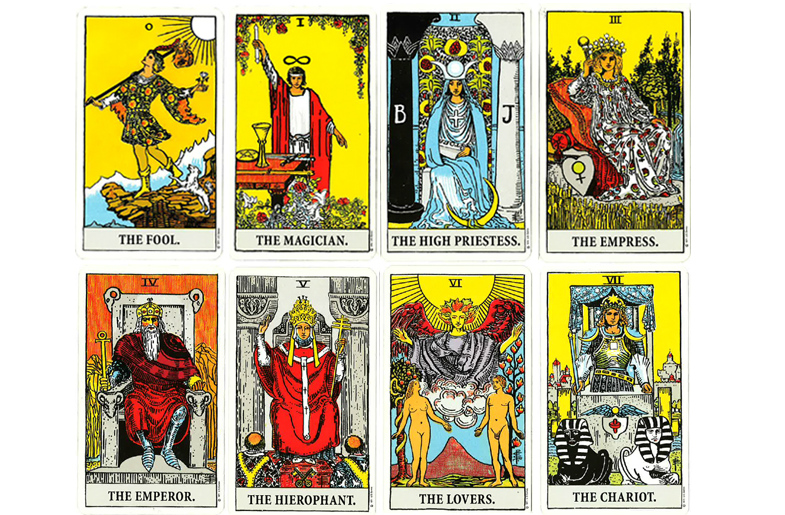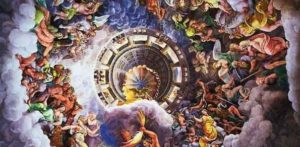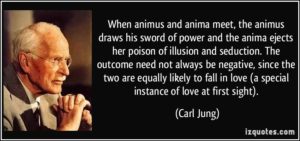A Brief Guide to Jungian Archetypes and the Collective Unconscious


 Carl Jung is, without a doubt, one of the most fascinating, mysterious and controversial figures to emerge from the field of Psychology. He popularized concepts like synchronicity, the collective unconscious, archetypes and many others that people still wax philosophical about on a daily basis around the world.
Carl Jung is, without a doubt, one of the most fascinating, mysterious and controversial figures to emerge from the field of Psychology. He popularized concepts like synchronicity, the collective unconscious, archetypes and many others that people still wax philosophical about on a daily basis around the world.
The good folks over at Wisdom Pills have put together a great introduction to Jungian archetypes. These motifs are the key understanding our own inner realms, behaviors and thought patterns.
Via Wisdom Pills–
“The late Dr. Carl Jung was a Swiss psychologist known for founding the field of analytical psychology. Not only was he one of the premiere psychologists of his time, many also consider him one of the greatest minds to ever grace the field itself. His contributions to the science as a whole were numerous and invaluable.
Among them was the concept of the collective unconscious and the archetypes that comprise it. Widely unknown to the vast majority of people, these deep psychological forms, which are present in all humans, can in many ways be considered more important to our lives than the external, linear-based stories we find ourselves playing out every day. This is because these archetypes are, in reality, the motivating forces that propel us through those lives. They are all the different elements that make up the core tendencies, traits, habits and proclivities we are so often unaware of in ourselves, but that make us who we are, and cause us to do what we do, both ‘good’ and ‘bad’. For those of us interested in curbing self-destructive habits, gaining a deeper awareness of the roles we play, and learning how to actually mature as we age, there is nothing we could benefit from more than the study of the collective unconscious and the different forms that make it up. This could be considered the practical manner of setting about achieving the ancient dictum “know thyself”.
While we’ve already provided a brief breakdown of Jung’s achievements in our post: 30 Carl Jung Quotes Guaranteed to Crack Your Idea of ‘Reality’ Wide Open, we have yet to feature anything on his primary teachings. The following is an excerpt from changingminds.org, outlining what many consider to be the 4 main archetypes. Along with them we’ve also included the on-again off-again fifth archetype, The Persona, extricated from Pand.ca. The result is a concise, easy-to-follow overview of a subject that is often quite hard to grasp. If, after reading, you are interested in going deeper, Jung: A Very Short Introduction is a good place to start.
“Psychologist Carl Gustav Jung described several archetypes that are based in the observation of differing but repeating patterns of thought and action that re-appear time and again across people, countries and continents. Jung’s main archetypes are not ‘types’ in the way that each person may be classified as one or the other. Rather, we each have all basic archetypes within us. He listed four main forms of archetypes:
- The Shadow
- The Anima
- The Animus
- The Self
The Shadow
The Shadow is a very common archetype that reflects deeper elements of our psyche, where ‘latent dispositions’ which are common to us all arise. It also reflects something that was once split from us in early management of the objects in our lives.
It is, by its name, dark, shadowy, unknown and potentially troubling. It embodies chaos and wildness of character. The shadow thus tends not to obey rules, and in doing so may discover new lands or plunge things into chaos and battle. It has a sense of the exotic and can be disturbingly fascinating. In myth, it appears as the wild man, spider-people, mysterious fighters and dark enemies.
 We may see the shadow in others and, if we dare, know it in ourselves. Mostly, however, we deny it in ourselves and project it onto others. It can also have a life of its own, as the Other. A powerful goal that some undertake is to re-integrate the shadow, the dark side, and the light of the ‘real’ self. If this can be done effectively, then we can become ‘whole’ once again, bringing together that which was once split from us.
We may see the shadow in others and, if we dare, know it in ourselves. Mostly, however, we deny it in ourselves and project it onto others. It can also have a life of its own, as the Other. A powerful goal that some undertake is to re-integrate the shadow, the dark side, and the light of the ‘real’ self. If this can be done effectively, then we can become ‘whole’ once again, bringing together that which was once split from us.
Our shadow may appear in dreams, hallucinations and musings, often as something or someone who is bad, fearsome or despicable in some way. It may seduce through false friendship or threaten with callous disregard. Encounters with it, as an aspect of the subconscious, may reveal deeper thoughts and fears. It may also take over direct physical action when the person is confused, dazed or drugged.
The Anima and Animus
The second most prevalent pattern is that of the Anima (female) / Animus (male), or, more simply, the Soul, and is the route to communication with the collective unconscious. The anima/animus represents our true self, as opposed to the masks we wear every day and is the source of our creativity.
These archetypes may appear as someone exotic or unusual in some way, perhaps with amazing skills and powers. In fiction, heroes, super-heroes and gods may represent these powerful beings and awaken in us the sense of omnipotence that we knew in that very early neonatal phase.
Anima and animus are female and male principles that represent this deep difference. Whilst men have a fundamental animus and women an anima, each may also have the other, just as men have a feminine side and women a masculine. Jung saw men as having one dominant anima, contributed to by female members of his family, whilst women have a more complex, variable animus, perhaps made of several parts.
Jung theorized the development of the anima/animus as beginning with infant projection onto the mother, then projecting onto prospective partners until a lasting relationship can be found.
The Syzygy (the divine couple)
In combination, t he anima and animus are known as syzygy (a word also used to denote alignment of planets), representing wholeness and completion. This combining brings great power and can be found in religious combinations such as the Christian Holy Trinity (Father, Son and Holy ghost).
he anima and animus are known as syzygy (a word also used to denote alignment of planets), representing wholeness and completion. This combining brings great power and can be found in religious combinations such as the Christian Holy Trinity (Father, Son and Holy ghost).
A perfect partnership between man and woman can occur when not only are our physical forms compatible but also the anima and animus. Thus you might find your soul-mate. Finding our matching other half is a lifetime of search for many of us, and few of us succeed in this quest. Love of another indicates an actual, perceived or hoped-for close match.
The Self
For Jung, the self is not just ‘me’ but God. It is the spirit that connects and is part of the universe. It is the coherent whole that unifies both consciousness and unconsciousness. It may be found elsewhere in such principles as nirvana and ecstatic harmony. It is perhaps what Jaques Lacan called ‘the real’.
Jung described creation of the self as a process of individuation, where all aspects are brought together as one. Thus ‘re-birth’ is returning to the wholeness of birth, before we start to split our selves into many parts.
The Persona
The Persona is that which we present to the outside world. It isn’t really our selves, though there is a danger we can identify too much with it and believe it to be so. It is a mask. It’s not a bad thing to have, in fact it’s necessary for getting along with others. Jung seems to talk about it in the singular, but I suspect that a well adjusted person has several masks and is adept at juggling them and knowing which one is appropriate when and just how opaque it needs to be. In any event, singular or plural, it’s a fact of life. Ask a doctor what he does and he won’t say, “I do medicine”, he’s unlikely even to say, “I practice medicine”. What you’ll likely hear is “I’m a doctor”. Occupation isn’t the only shelf where masks are pulled from. Religion, sexual orientation, politics, the social sciences….
The Persona is that which we present to the outside world. It isn’t really our selves, though there is a danger we can identify too much with it and believe it to be so. It is a mask. It’s not a bad thing to have, in fact it’s necessary for getting along with others. Jung seems to talk about it in the singular, but I suspect that a well adjusted person has several masks and is adept at juggling them and knowing which one is appropriate when and just how opaque it needs to be. In any event, singular or plural, it’s a fact of life. Ask a doctor what he does and he won’t say, “I do medicine”, he’s unlikely even to say, “I practice medicine”. What you’ll likely hear is “I’m a doctor”. Occupation isn’t the only shelf where masks are pulled from. Religion, sexual orientation, politics, the social sciences….




0 Comments